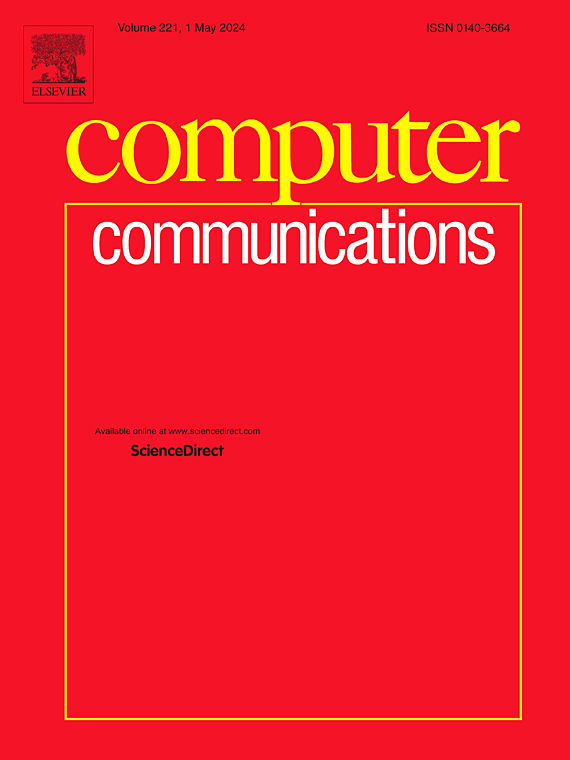卫星-地面NOMA网络中一种新型联合短分组传输
IF 4.5
3区 计算机科学
Q1 COMPUTER SCIENCE, INFORMATION SYSTEMS
引用次数: 0
摘要
本文提出了一种将非正交多址(NOMA)与卫星和短分组技术相结合的创新通信框架,以解决第六代(6G)网络的新需求。介绍了卫星-地面NOMA网络中短包专用传输信道模型,该模型解决了这些环境所带来的独特挑战。通过全面的性能分析,评估了诸如块错误率(BLER)、吞吐量和goodput等关键指标,增强了对不同条件下系统性能的理解。广泛的蒙特卡罗模拟验证了理论模型,证实了它们在现实世界场景中的适用性。研究结果表明,信噪比(SNR)的增加显著降低了中断概率和平均BLER,突出了信噪比在提高系统可靠性方面的关键作用。此外,研究表明,增加卫星天线的数量大大提高了系统性能,强调了天线配置的重要性。对区块长度和硬件噪声的分析为优化系统设计提供了重要的见解。总的来说,这项工作为未来通信系统的设计和优化提供了有价值的视角,强调了将NOMA与卫星和短分组技术相结合的潜力,以增强下一代6G网络的性能。本文章由计算机程序翻译,如有差异,请以英文原文为准。
A novel joint short-packet transmission in satellite–terrestrial NOMA networks
This paper proposes an innovative communication framework that integrates Non-Orthogonal Multiple Access (NOMA) with satellite and short-packet technologies, addressing the emerging demands of Sixth-Generation (6G) networks. A dedicated transmission channel model for short-packets in Satellite–Terrestrial NOMA networks is introduced, which tackles the unique challenges presented by these environments. Through a comprehensive performance analysis, key metrics such as Block Error Rate (BLER), throughput, and goodput are evaluated, enhancing the understanding of system performance under varying conditions. Extensive Monte-Carlo simulations validate the theoretical models, confirming their applicability in real-world scenarios. The findings demonstrate that an increase in the Signal-to-Noise Ratio (SNR) significantly reduces both outage probability and average BLER, highlighting the critical role of SNR in enhancing system reliability. Furthermore, the study reveals that increasing the number of satellite antennas substantially improves system performance, underscoring the importance of antenna configuration. The analysis of blocklength and hardware noise provides essential insights for optimizing system design. Overall, this work offers valuable perspectives for the design and optimization of future communication systems, emphasizing the potential of combining NOMA with satellite and short-packet technologies to enhance performance in next-generation 6G networks.
求助全文
通过发布文献求助,成功后即可免费获取论文全文。
去求助
来源期刊

Computer Communications
工程技术-电信学
CiteScore
14.10
自引率
5.00%
发文量
397
审稿时长
66 days
期刊介绍:
Computer and Communications networks are key infrastructures of the information society with high socio-economic value as they contribute to the correct operations of many critical services (from healthcare to finance and transportation). Internet is the core of today''s computer-communication infrastructures. This has transformed the Internet, from a robust network for data transfer between computers, to a global, content-rich, communication and information system where contents are increasingly generated by the users, and distributed according to human social relations. Next-generation network technologies, architectures and protocols are therefore required to overcome the limitations of the legacy Internet and add new capabilities and services. The future Internet should be ubiquitous, secure, resilient, and closer to human communication paradigms.
Computer Communications is a peer-reviewed international journal that publishes high-quality scientific articles (both theory and practice) and survey papers covering all aspects of future computer communication networks (on all layers, except the physical layer), with a special attention to the evolution of the Internet architecture, protocols, services, and applications.
 求助内容:
求助内容: 应助结果提醒方式:
应助结果提醒方式:


